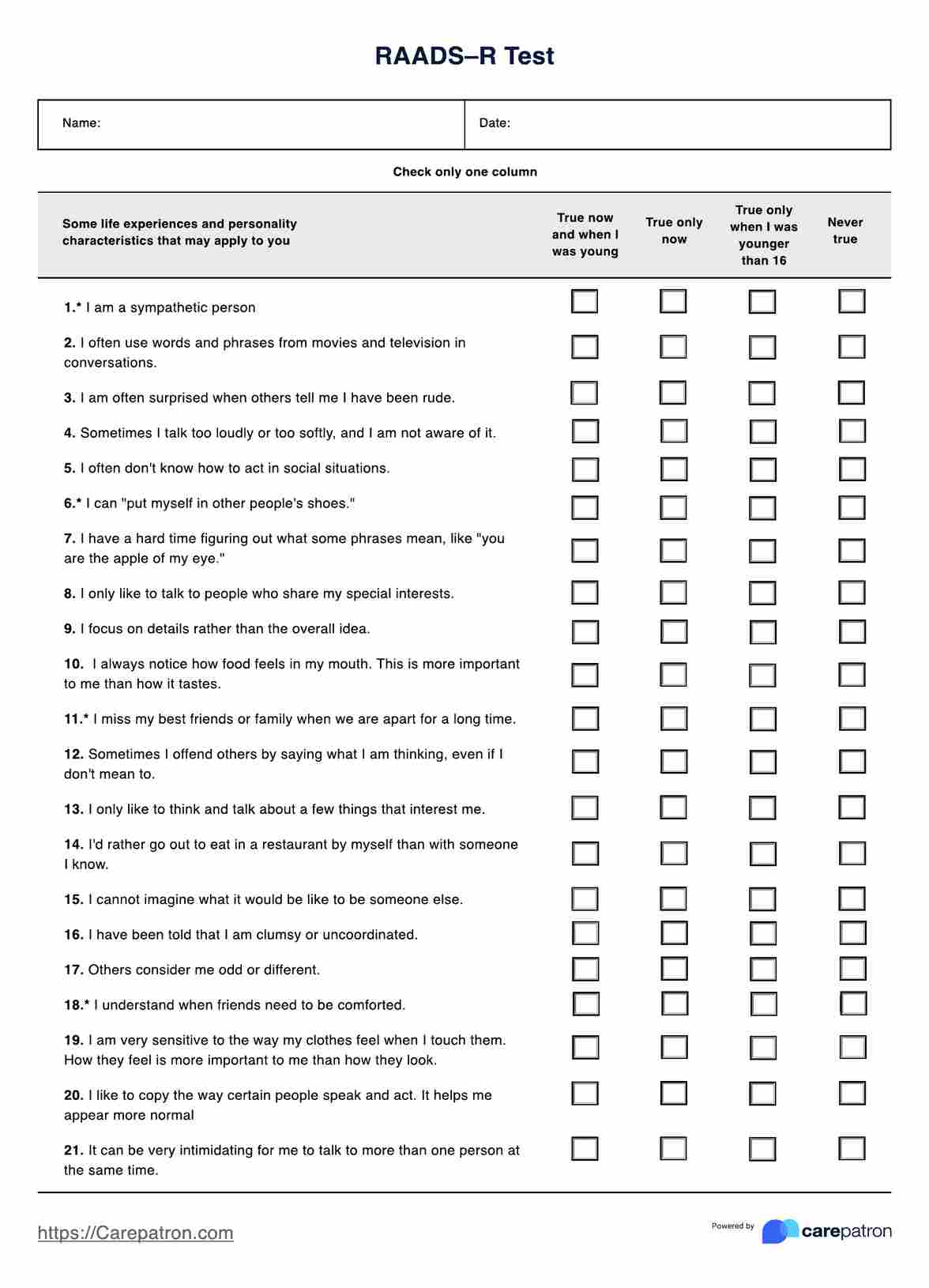The RAADS-R, a reliable instrument, has undergone extensive validation, demonstrating its accuracy in diagnosing ASD, boasting high levels of reliability and validity, with a sensitivity of 97.9% and a specificity of 94.2%, indicating its high accuracy in distinguishing individuals with ASD from those without.












